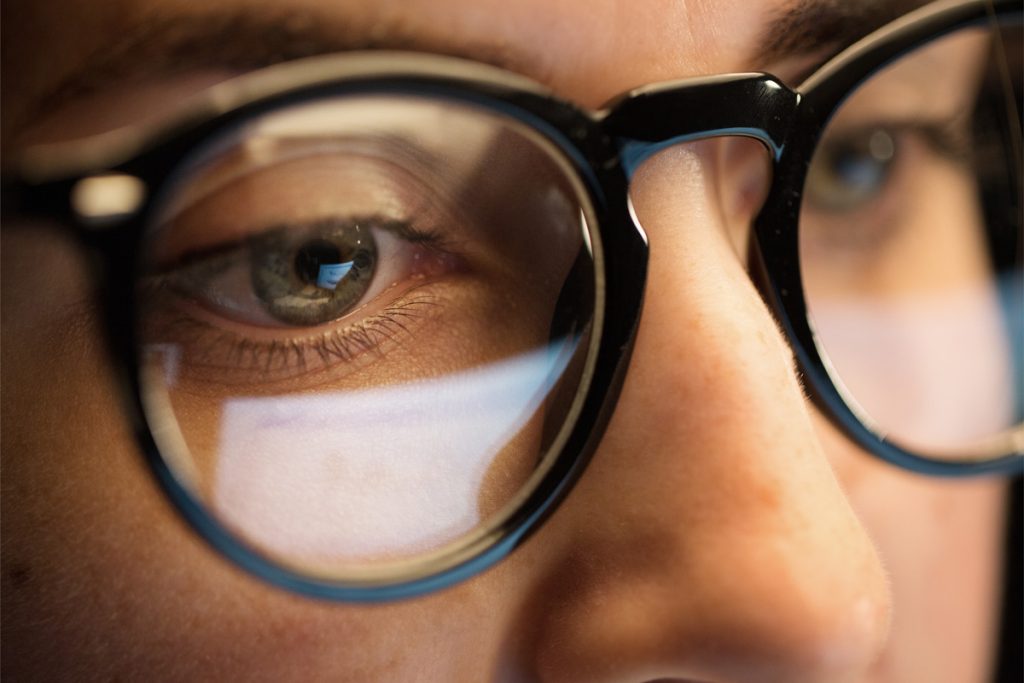
By Annette Brooks
Working from home, Zoom meetings, online lessons, binge-watching a show on your tablet or laptop, playing games on your smartphone — it all adds up to lots of digital screen time. While it’s a way of life in our digital age, especially during the pandemic, excessive screen time without breaks and taking other precautions can negatively affect our eyes.
Looking at a screen for extended periods can cause computer vision syndrome, with symptoms that include dry eyes, blurred vision, and headaches. And according to the National Center of Biotechnology Information, increased digital screen time can be associated with the onset and progression of myopia (nearsightedness). Research also shows that the blue light emitted from backlit devices such as smartphones, laptops, and tablets could lead to macular degeneration, a major cause of blindness.
Give your eyes some much-needed TLC by taking steps to help protect them from excessive digital screen time. Your eyes will thank you!

Take a 20-20-20 break. The American Academy of Ophthalmology recommends allowing your eyes to relax by shifting them every 20 minutes to look at an object at least 20 feet away for at least 20 seconds. Set a timer as a reminder, and why not take the opportunity to get up, stretch, and walk around for a minute as you do this.
Take a more extended break. In addition to the 20-20-20 rule, take 15-minute breaks after every two hours you spend behind the screen. Stand up, walk away from your screen, and give your eyes a rest. Call a colleague or friend. Look out the window or step outside. Not only will your eyes benefit from this, so will your mind and body.
Reduce screen glare. Use a matte screen filter if your computer screen has a lot of glare.
Distance matters. Sit at an arm’s length away from the screen and position it so your eyes gaze slightly downward.
Keep the room humidified, use artificial tears if need be (consult with your physician first), and make sure drafts from fans, air conditioners, heaters, and other sources are not drying out your eyes.
Adjust your lighting. Did you know your eyes have to work harder if a computer screen is brighter than the surrounding light? Help reduce eye strain by increasing the lighting in your room and adjusting the screen’s brightness to match the level of light around it. Increasing the contrast on the screen may also help reduce eye strain.
Blink. When staring at a digital screen, many of us don’t blink as often as we usually would. Blinking spreads tears evenly over your eyes, keeping them from getting dry and irritated. On average, humans blink around 15 to 20 times per minute. When reading a screen, blinking can reduce by half this amount.
If you take these measures while using a digital screen and your eyes still feel dry and irritated, or if you experience eye pain or your vision is affected, see an eye doctor. To make sure your symptoms are not a sign of an underlying condition.









